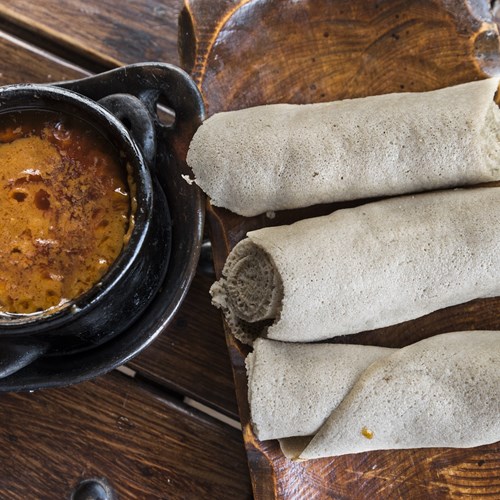
Addis Ababa, Ethiopia
Capital of one the world's fastest-growing economies, Addis Ababa (also spelled Addis Abeba) is a city in motion, catching up to Ethiopia's zooming commercial development in its stride. At times gauche and somewhat rough around the edges, it is nonetheless worth more than a single night in transit, if only for the country's finest dining, shopping, and of-the-moment urban developments.
Population:
4.6 million
Currency:
Ethiopian birr
Emergency Numbers:
Universal number: 911
Police: 991
Ambulance: 907
Fire: 939
Traffic police: 945.
Opening Hours:
Newspapers:
The City

Having descended from its original founding spot atop the close-by Entoto Hill (the city used to shift seasonally between its elevated and low-lying locations until the late 19th century), Addis Ababa has long taken root in the heart of Ethiopia, and grown to become not just the country's official capital, but the entire continent's diplomatic first city, for the abundance of important international organisations based here (among which United Nations Economic Commission for Africa and the African Union).
The sprawling city's two neighbourhoods to keep on your radar are the Mercato (home to an enormous market selling everything under the sun) and Piazza, the backpackers' favourite. Bole, the area in immediate vicinity of the airport, is an upper-class neighbourhood where the country's most affluent reside, along with a significant expat population. Outside of Addis, the natural wonderland of Menagesha forest, Debre Libanos monastery, archaeological site of Tiya and scenic crater lakes of Bishoftu make for excellent day trips.
Do & See

Although most visitors to Ethiopia enter the country through Addis, few choose to linger for more than just a night or two before heading further inland to explore some if the country's ancient relics, and very unjustly so. There is an urban vibrancy of a distinct kind inhabiting the busy Mercato and Piazza, scented by the aromas of excellent coffee served at nearly every corner, and a handful of worthy museums to check out on a longer stay.
Dining

At the heart of Ethiopian dining sprawls the injera, a large savoury pancake with a porous surface made from tef, a grain native to Ethiopia and Eritrea, often replaced in the West for rice flour – often, at the cost of authentic flavor and consistency. The injera is then topped with a variety of "wet", which are essentially different varieties of curries and stews (go for the vegetarian options on Wednesdays and Fridays, fasting days during which many locals abstain from consuming animal foods, so these may likely be leftovers from earlier).
Cafes

Some of the world's most revered coffee beans, along with remnants of an Italian presence in the country, make for a spectacular coffee culture, one upheld by locals who have firmly embraced coffee-drinking as an essential part of daily living. Coffee shops are aplenty, with many popular haunts in and around the busy Piazza area (most also sell beans by the bag). Do try and attend a traditional Ethiopian coffee ceremony, wherein the beans are first roasted, then ground, followed by the invigorating drink being brewed in a jebena (designated clay pot) and poured into ornate cups.

